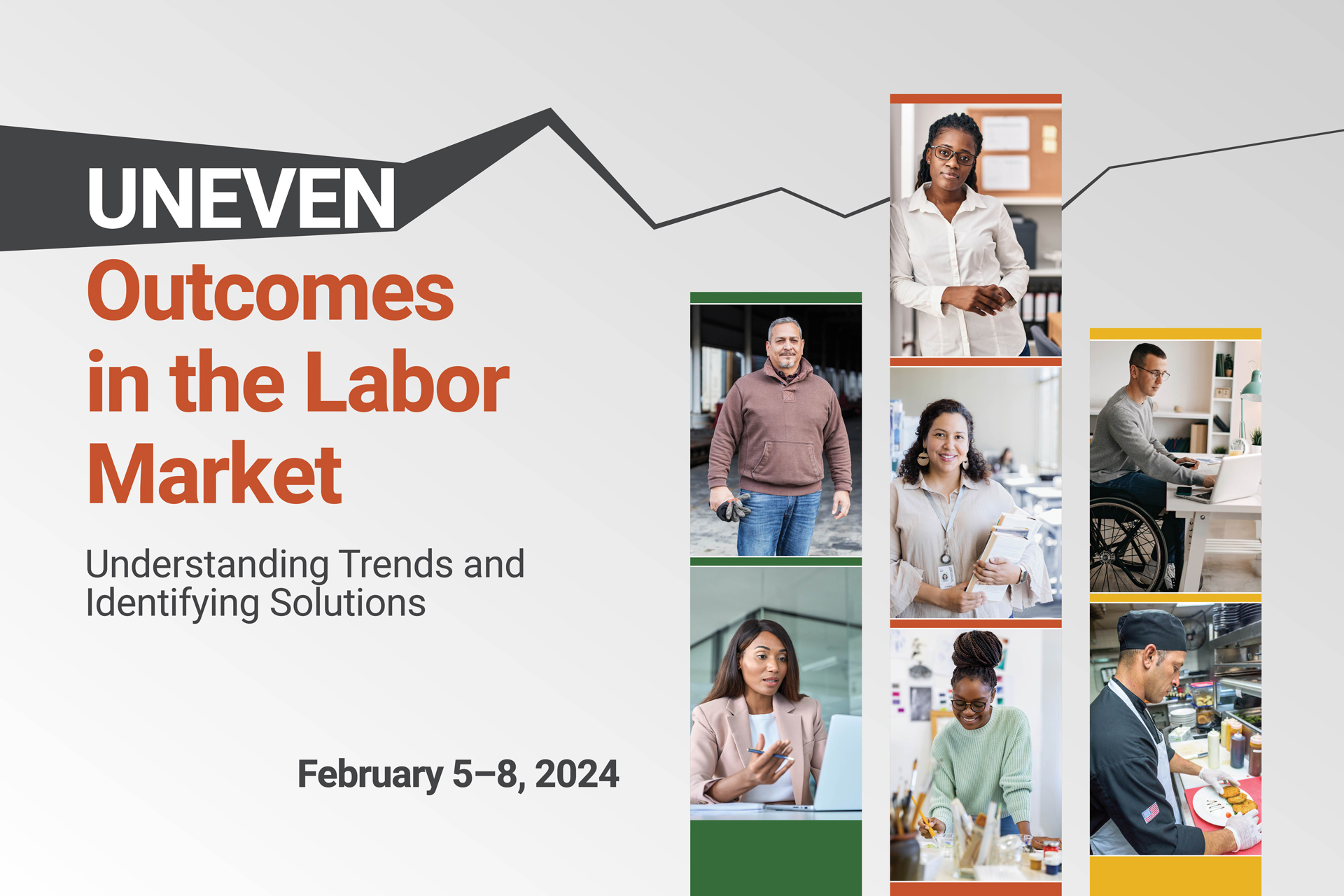A conversation on Skills Through Alternative Routes (STARs)
October 17, 2023


Transcript
Hello and welcome, everyone. I’m Sergio Galeano. I’m a community and economic development advisor with the Center for Workforce and Economic Opportunity at the Federal Reserve Bank of Atlanta.
As we know, the labor market and disparities within it have notably changed since 2018. That’s the last time the Federal Reserve System hosted a conference around uneven outcomes in the labor market. As we gear up for our next convening on this topic in February 2024, we’re taking the opportunity to chat with speakers who joined us at the 2018 event.
We’re asking them What insights can you share as we take stock of the past five years of change in the labor market? And what lessons learned should be consider as we look ahead to the future?
As we continue, I want to note that the views and opinions expressed here are the speakers and do not necessarily reflect those of the Federal Reserve Bank of Atlanta or the Federal Reserve System.
Today, I’m joined by Papia Debroy. Papia is the senior vice president for insights at the nonprofit Social Enterprise Opportunity@Work, where she leads the research and data analytics teams. Welcome, Papia.
Papia Debroy
Hi, Sergio. Thanks so much for inviting me to this conversation with you today.
Sergio Galeano
And thanks for joining. At the 2018 conference, you introduced the concept of STARs to our audience. A year ago, Opportunity@Work launched the Tear the Paper Ceiling campaign to raise awareness on STARs as vital members of our workforce. Please remind us who and what are STARs?
Papia Debroy
Yeah, of course. So, there are about 140 million of us who are active in the labor force. Of that 140 million, about 60 million have a college degree or a higher level of educational attainment. There are more than 70 million workers in our workforce, though, who do not have a degree but do have a high school diploma. They are each bringing valuable skills to their roles.
And so, these workers are skilled through alternative routes, or that acronym for Skills Through Alternative Routes is STARs. They’ve gained their skills through community college, through military service, or through training programs. Most commonly, STARs are learning on the job, and they make up over half of our workforce and are working in almost all occupations and geographic regions in this country.
I think it’s also important to recognize that they represent the full diversity of the U.S. workforce. So, 61% of black workers, 56% of Hispanic workers, 49% of white workers are STARs. And two thirds of our veteran and rural workforce are also STARs.
Sergio Galeano
That’s a significant share of the workforce as we think about them. What barriers do STARs face and how does that play out in their labor market outcomes?
Papia Debroy
Yeah, that’s a great question. It’s interesting if you look at the data from the last 30 years. 30 years ago, in 1989, when a STAR entered the workforce at the age of 25, they were earning less than a college graduate. But if you track the median wages of the STAR for the next 30 years, what you actually find is that even in their 30th year of work, they’re still not earning what a bachelor’s degree candidate was earning on the first day of work.
Now, there has always been a gap in the wages between bachelor’s degree candidates and STARs, but that’s a pretty stunned ring shift, an opportunity for STARs. What we see is that this is partially due to what we call a paper ceiling. The paper ceiling is it’s an invisible barrier that STARs run into because they don’t have the educational degrees that people are looking for.
But the barriers actually extend beyond that education to when STARs are screened out of jobs. They lose access to a lot of other jobs across pathways in the United States. So, for instance, if you think about an administrative assistant, this has been a job that historically has provided a gateway into other higher paying jobs in management, you know, such as human resources and many others.
But over the past 20 years, STARs have had a much harder time getting access to those jobs. That access shift has happened for a lot of jobs, like the administrative assistant. And what you see over time is that it has significantly impacted STAR mobility. Ultimately, when we limit opportunity for half of our workforce who are gaining skills through many different pathways. We actually shrink our collective talent pool.
Sergio Galeano
Since you spoke about this at the last conference. Have there been any notable changes? How did STARs fare during the pandemic, for example? And in the post-pandemic economic recovery?
Papia Debroy
STARs were pretty hard hit during the pandemic. Two thirds of essential workers were STARs, and many of them were really on the front lines of the crisis. It was also just interesting to note that in parts of the economy, like hospitality, retail services, STARs also experienced a disproportionate volume of the layoffs. What has been promising to see in the data is that as businesses are opening roles in our post-pandemic labor market, there is a there’s a new openness to actually thinking about STARs as a vast, overlooked, skilled talent per talent pool in our labor force.
And I think one of the places where we’re starting to see that momentum in a really extraordinary way is in the public sector. Last summer, the state of Maryland revised its hiring policies and actually opened tens of thousands of public sector jobs to STARs that historically had not been available to STARs. What has been really exciting to see since then is that there are now 15 states who do not require degrees for their public sector roles.
Now I think what’s really exciting to think about is if all 50 states were to take this action, if employers in these regions would similarly open up their jobs to STARs, we could actually see pathways to opportunity. Look, you know, fundamentally different in this coming period as we advance our economy in this post-pandemic recovery. This national campaign that we have launched to “tear the paper ceiling” in partnership with the Ad Council has really established STARs as a talent category and really helped a lot of employers understand the value of a population that has really been overlooked in a pretty significant way in the past generation.
Sergio Galeano
As I think about the Tear the Paper Ceiling Campaign and the research and work you’re doing around the country, I understand that a big part of working for STARs is having impact in this space. It’s increasing hiring for STARs and reducing the barriers they face. How do you measure that impact? Are there any measures for increasing hiring or promotion, for example?
Papia Debroy
Yeah, great question. It’s interesting because STARs are in almost every occupation in the US labor market, which suggests that there are many alternative paths to getting to all kinds of jobs. I think what’s interesting is that you can study the proportion of STARs in each occupation and there’s quite a bit of variation in that. So I think one of the things that we’re starting to note in the data is that how STARs are faring in a lot of middle and high wage jobs is shifting over time.
And in some occupations like computer support specialist H.R. assistant, we see that the proportion of STARs in those occupations is falling. I think what’s interesting to note, though, is that job postings for many of these roles are also shifting. So different regions are starting to think about and expand their aperture to actually see STARs as really valuable talent for a lot of those same jobs.
And so, what we’re hoping to see in the aggregate data over time is that STARs continue to gain access to jobs for which they are gaining skills through many different pathways. And so, in the you know, our intention over the years is to actually be able to track that type of outcome, right where our STAR is gaining access as measured through job postings.
And where are they getting hired as measured through STARs in occupations.
Sergio Galeano
Building on that question, what can employers and policymakers do to help change the trajectory for STARs and help them realize their full potential?
Papia Debroy
I think it’s really important that employers start to think about how they can move towards a skills based hiring approach and actually make commitments to hiring STARs. The core distinction of skills based hiring is that it represents a it’s a shift from traditional hiring practices. Traditional hiring practices use education, previous employers, years of experience, job titles as indicators of a candidate’s capabilities.
Skills based hiring actually moves towards practices that focus on the skills needed to do the job that requires that employers actually adjust how they source. How they assess candidates and actually think about the many different pathways that workers are gaining valuable skills that are incredibly important for the jobs that employers need to fill. I think beyond employers, policymakers should be supporting these efforts by actually strengthening those pathways.
You know, certainly they can do that through investments in workforce development. We’ve seen just absolutely historic investments in infrastructure and jobs through the American Rescue Plan, the bipartisan infrastructure package, Chip Science Act. Those are all providing opportunities to actually improve outcomes and open opportunities for STARs.
Sergio Galeano
As we continue to think about the future of STARs and your work with Opportunity@Work. What other research questions and initiatives are you in the team considering and planning for?
Papia Debroy
Our ongoing research agenda and opportunity at work is really anchored in understanding opportunity for STARs to experience economic mobility in the labor market. But there are so many important questions for the broader field to be taking on to help us actually glean insight that we need as practitioners to do this work effectively in communities. We are curious to learn from scholars who are exploring behavior within the firm.
We would love to learn from scholars who are trying to understand STAR opportunities in the context of regional labor markets. You know, within subgroups of STARs, we see that pathways to mobility vary quite a bit. And I think that’s what’s important to us. We see this as a collective research agenda and certainly see this as an open invitation for anyone to participate.
That our belief very strongly is that collectively, if we take on these important questions that do set across many different fields of social science, we can actually bring out actionable insight for practitioners in the field to drive more equity and opportunity in many regions across this country.
Sergio Galeano
Papia, thank you so much for joining us today. And shedding light on STARs on the path forward to increase their economic mobility. And thank you to our listeners. We invite everyone to register for the uneven outcomes in the labor market conference scheduled for February 2024. We will feature discussions with researchers, policymakers and practitioners on topics just like this as we continue to shed light and share research on inequities in today’s labor market outcomes.
On behalf of the Atlanta Federal Reserve and the Federal Reserve System, thank you for listening today.

Workforce development professionals, mark your calendars!
The Uneven Outcomes in the Labor Market: Understanding Trends and Identifying Solutions virtual conference will be February 5-8, 2024. Presented by the Federal Reserve Board of Governors and the Federal Reserve Banks of Atlanta, Boston, Cleveland, Philadelphia, San Francisco, and St. Louis, this conference will take a deep dive into labor market trends, and the research that explains these outcomes.
